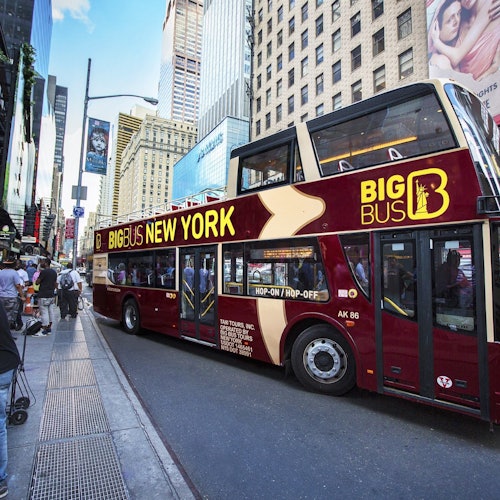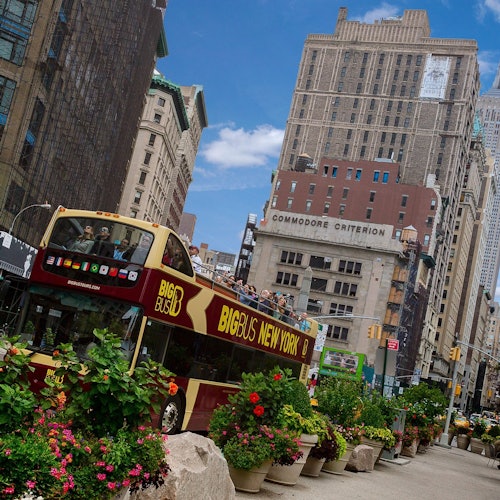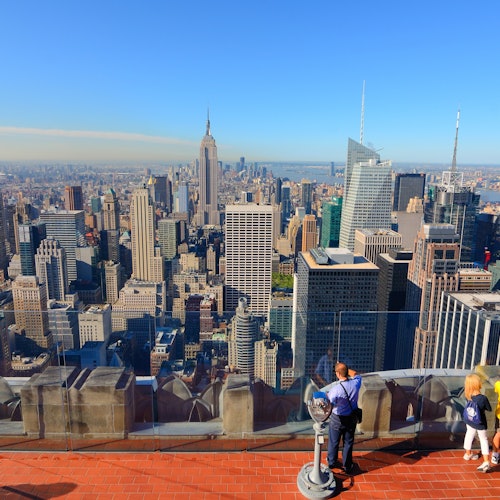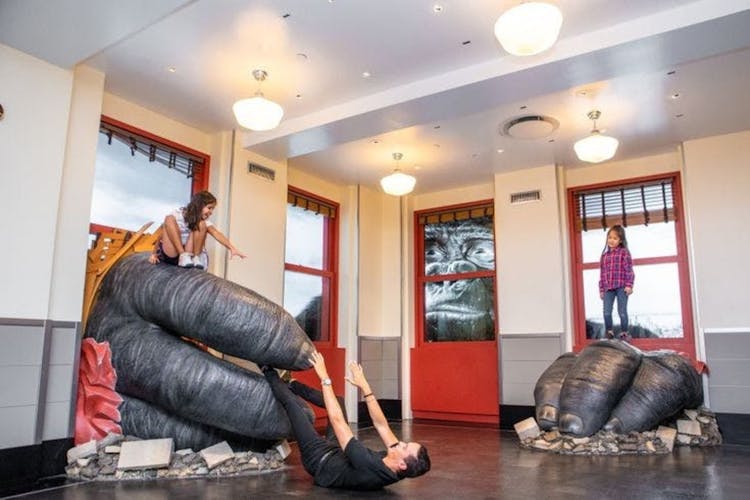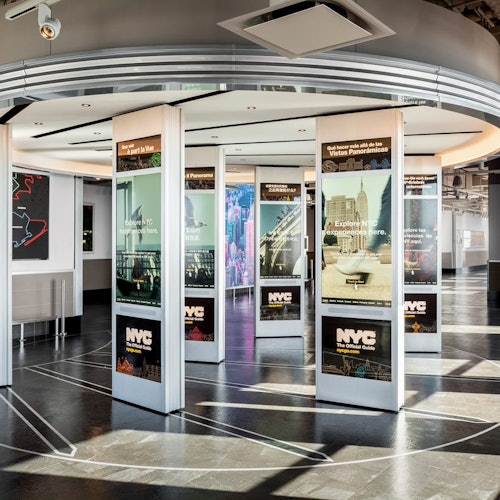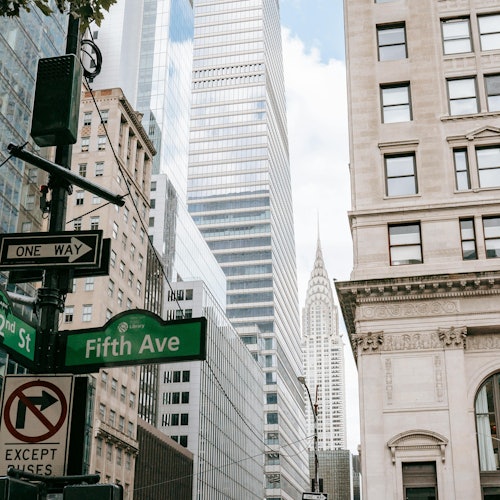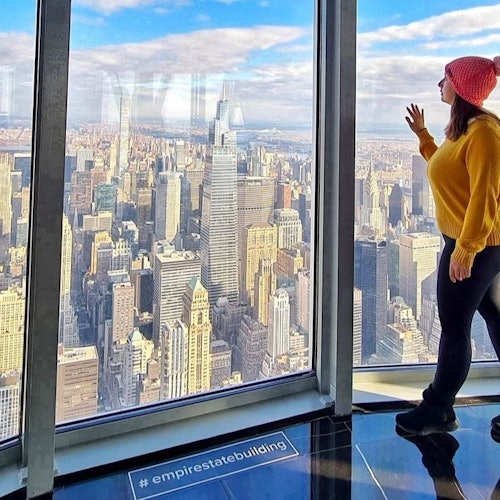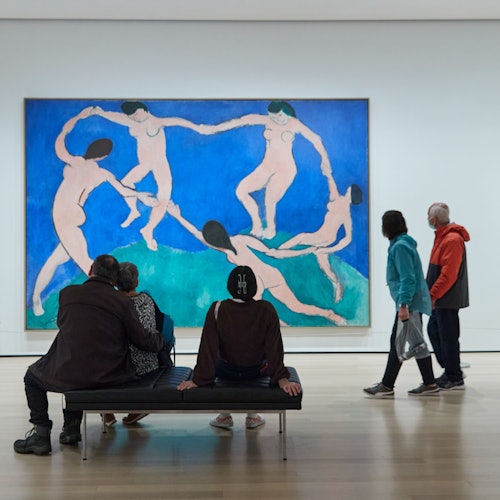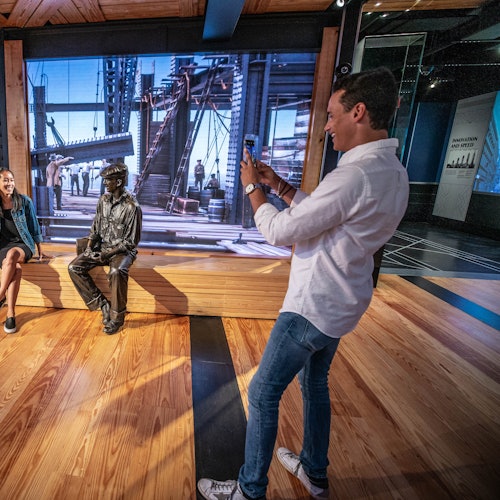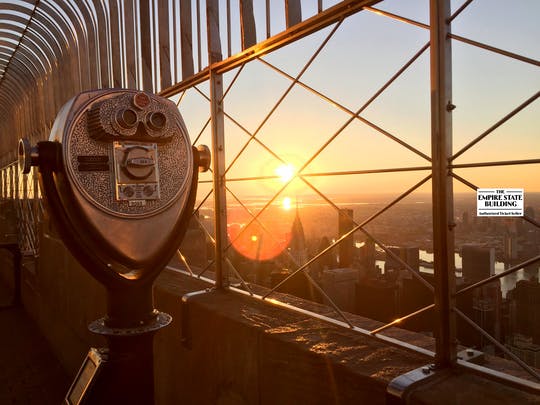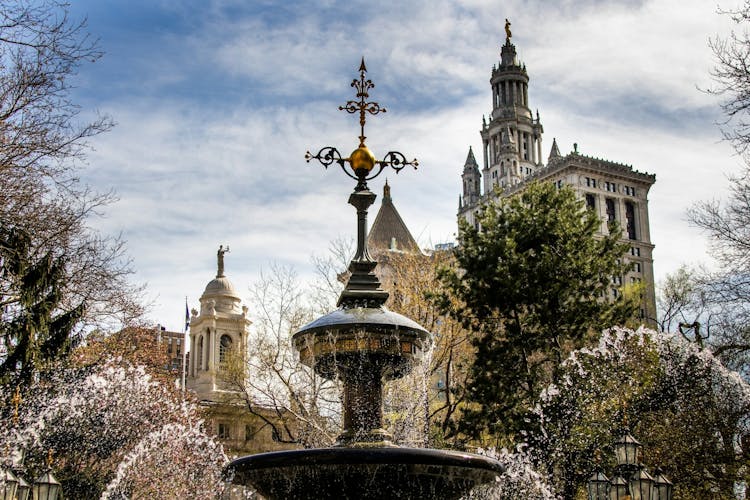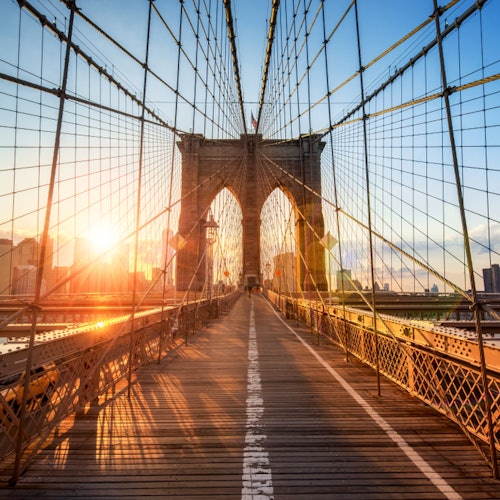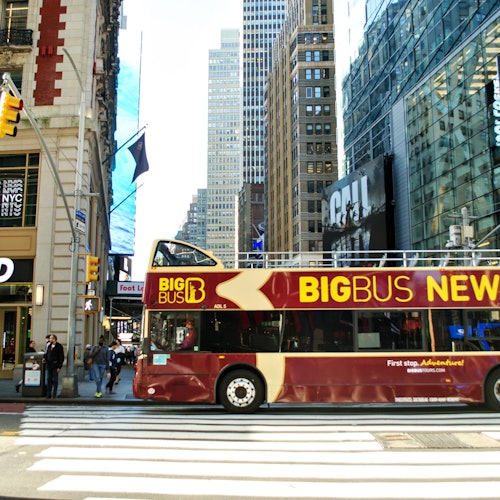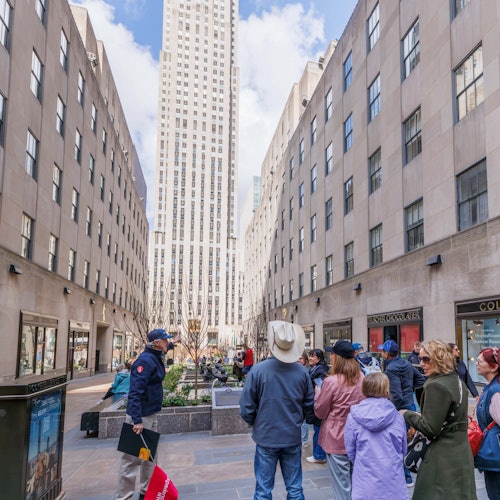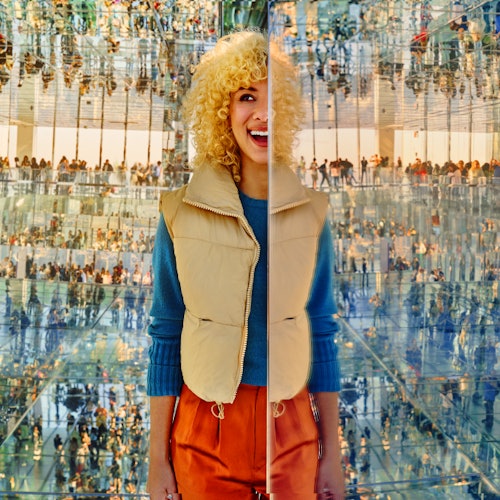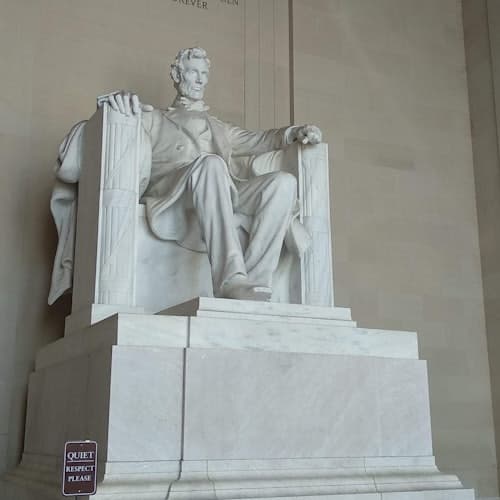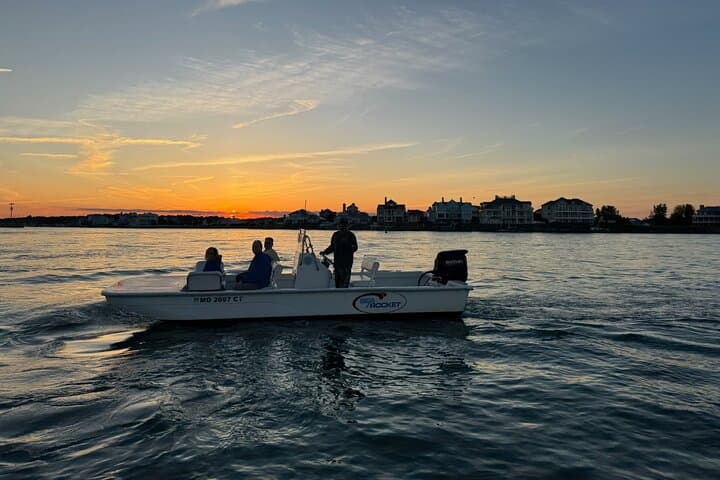Empire State Building Tickets
Last update:
Continue planning your trip to New York
Empire State Building tickets: observatory views, sunrise and New York combos
With Empire State Building tickets you can squeeze the skyline into a quick stop between plans, wake up with the city at sunrise or link your visit to guided walks, bus tours and cruises that circle Manhattan. In our catalog of activities you will find straightforward observatory entries, quiet early-morning access and multi-attraction options that help you organize New York by neighborhoods and energy instead of by queues.
📚 Choose your experience
Classic observatory tickets
Open-air 86th floor and top deck.
Sunrise at the Empire State
Few people, soft light, calm city.
Guided tours and Midtown walks
Art Deco stories and street-level New York.
Hop-on bus and cruise combos
City loops, river views and observatory slot.
Half-day bus tour with deck
Orientation route and chosen viewpoint.
Entry with extra attractions
Empire State plus another highlight.
Frequently asked questions
Tickets, queues, best time and tips.
Classic Empire State Building observatory tickets: 86th and 102nd floors
The most direct option is a straight ticket to the observatory: you enter through the Art Deco lobby, cross the museum-style galleries and step onto the 86th floor open-air terrace, where Manhattan spreads out in every direction between the Chrysler Building, One World Trade Center and the Hudson River.
With these Empire State Building tickets you choose between staying on the classic 86th floor or adding the enclosed 102nd floor top deck, higher and more intimate, where the city feels quieter and the streets become lines of light. Many visitors keep the 86th as their base and treat the 102nd as a bonus for a final round of photos.
Daytime visits show Central Park in full color, while late-night entries turn the observatory into a calmer lookout, framed by building lights and bridges. If you plan to walk the city the same day, you can combine a daytime visit with a Brooklyn Bridge walking tour to match river views and skyline panoramas in a single itinerary.
📐 Quick look: 86th vs 102nd floor
- 86th floor: open-air terrace, wider space to move.
- 102nd floor: enclosed gallery, more vertical perspective.
- Upgrade choice: keep 86th included, add height if you want.
🧭 Practical tips for classic tickets
- Check visibility: clear days give sharper long-distance views.
- Avoid peak hours if you prefer space around the railings.
- Layer your clothing: wind on the terrace can feel cooler.
Empire State Building sunrise tickets: the quiet skyline
Sunrise access is the most contemplative way to use your Empire State Building tickets: you go up when the streets below are still waking up, the deck is much quieter and the light changes from blue to gold over the rivers. The atmosphere feels closer to a private event than to a typical daytime visit, with more time to linger at the railings.
These sunrise experiences usually include regular observatory access after first light, so you can stay as the city gets busier or head down early for breakfast nearby. They work especially well if you are dealing with jet lag and want to turn an early wake-up into a highlight instead of waiting in line later.
🌅 Is sunrise worth it?
Choose the sunrise format if you value fewer people around you, softer light and a more relaxed pace more than sleeping in. It is also a strong option for special trips such as honeymoons, where waking up early to see the city from above becomes a shared memory rather than just another viewpoint.
🧭 Sunrise planning tips
- Arrive a bit before your slot to clear security calmly.
- Check the weather forecast so clouds do not hide the horizon.
- Bring a warm layer, especially in colder months on the terrace.
Guided Empire State Building tours and Midtown walks
Guided formats turn your Empire State Building tickets into a story: a local guide walks you through lobby details, construction anecdotes and movie scenes before or after taking the elevator. When the visit is paired with a Midtown walking tour, you also get context on Times Square, Fifth Avenue and nearby landmarks, not just the view from above.
Some options focus on inside-the-building guided tours, ideal if you want to understand the architecture and history before stepping onto the deck. Others start at street level, tracing Midtown blocks on foot so that by the time you reach the observatory you can recognize cross streets, rooflines and theatres from above.
👣 Who enjoys guided tours most?
Choose these experiences if you like narrative, anecdotes and questions answered in real time more than moving independently. They work particularly well on your first full day in New York, when a guide can decode the city’s grid and give you reference points you will use for the rest of the trip.
🧭 How to fit Midtown in your day
Many travelers pair a Midtown route and observatory visit with a later downtown walk in a different neighborhood, such as a Soho walking tour in NYC or a Wall Street walking tour in New York City. That way your Empire State Building tickets become the vertical chapter of a day that also includes street-level contrasts.
Hop-on hop-off bus and cruise combos with Empire State Building entry
Combo tickets that link a hop-on hop-off bus route, a boat cruise and Empire State Building entry are designed for travelers who want to see many icons with one purchase. You circle Manhattan on the bus at your own rhythm, take a cruise on the river to photograph the skyline and then use your reserved observatory slot to finish the day above the city.
These experiences usually spread over a full, flexible day, allowing you to get off the bus near museums, neighborhoods and piers before continuing the circuit. The river segment gives you open views of Lower Manhattan, the bridges and the Statue of Liberty from the water, so by the time you reach the observatory you have already seen the skyline from below.
🧭 When a bus and cruise combo shines
Choose this type of Empire State Building ticket if you are staying only a few days in New York and prefer a structured route instead of planning every transfer. It is especially useful for first-time visitors and families who value simple logistics and clear meeting points more than total spontaneity. Check GuruWalk’s activity catalog to see the latest prices and what each combo includes.
Half-day New York bus tour with observation deck choice
The half-day bus tour with a choice of observation deck gives you a curated route through Manhattan by coach, followed by entry to one of the city’s viewpoints, where many travelers opt to use Empire State Building tickets for the most classic perspective. It works as a quick orientation session in which you see key avenues, neighborhoods and riverfronts before deciding where to spend more time later.
From the bus you can sit back and listen to explanations while the city passes by the window, something that is especially welcome after a long flight or during colder months. Closing with an observatory visit keeps the momentum of the route: you see the same streets again from above and understand how they connect.
🚌 Tips for the half-day tour
Book this option early in your stay so the commentary becomes a mental map for the rest of the trip, bring a small bag with water and layers to adapt to air conditioning and terrace wind, and check in our offer of experiences whether your chosen date still includes the observation deck you prefer.
Empire State Building entry with extra New York attractions
Some Empire State Building tickets bundle observatory entry with one or two more attractions, such as another viewpoint, a museum or a cruise. They are useful if you already know you will visit several highlights and prefer to secure everything in a single purchase instead of booking separate slots.
These formats tend to work best for travelers who enjoy checking off major icons with clear time frames: you can schedule one attraction for the morning, keep the Empire State Building for late afternoon and leave evenings free for Broadway or neighborhood walks. Check GuruWalk’s activity catalog to compare which combinations match your interests, from culture-heavy days to more panoramic ones.
🎟️ Multi-attraction ticket tips
Before confirming your booking, review which experiences in our catalog offer flexible date use versus fixed time slots, verify whether your extra attraction requires arriving early for security and keep some buffer between activities so that views from the Empire State Building never feel rushed.
Frequently asked questions about Empire State Building tickets
Do you need tickets to get into the Empire State Building?
Yes, you always need a dated ticket to access the Empire State Building observatory, even if you have a pass or a combo tour. Many formats in our offer of experiences already include the observatory entry and time slot, so you only need to bring the confirmation shown in your booking and an ID if requested.
What is the difference between the 86th and 102nd floors?
The 86th floor is the main open-air observatory, with a wide terrace and classic metal railings, while the 102nd floor is a smaller indoor gallery higher up the tower with floor-to-ceiling windows. Standard Empire State Building tickets usually include the 86th floor as the base experience, and some options in our catalog add the 102nd floor as an upgrade.
Is it worth going to the 102nd floor of the Empire State Building?
The 102nd floor is worth it if you enjoy taller, more vertical perspectives and quieter spaces. The difference is not about seeing new neighborhoods, but about the feeling of height and the chance to step away from the main terrace crowds. If your budget is tight, the 86th floor alone already delivers the classic New York skyline; if you want something extra, consider the upgrade in our listed activities.
Is it better to visit the Empire State Building by day or at night?
By day you see more detail in bridges, parks and rivers; at night you gain the glow of the skyline and a more intimate mood on the terraces. Many travelers prefer late afternoon or early evening tickets to catch daylight and darkness in the same visit. In our catalog you will find slots across the day, so you can match the schedule to your photos and other New York plans.
How long is the wait to get into the Empire State Building?
Waiting time depends on season, day of the week and time of day. With dated Empire State Building tickets you still pass through security and elevator lines, which can be shorter very early, later at night or outside major holidays. Some experiences in our offer include priority or faster entry; check the description and recent reviews to see how they handle queues on your chosen date.
Is it worth buying Empire State Building tickets in advance?
Buying in advance is usually the best option because it secures your preferred time slot and experience type, especially for sunrise entries, guided tours and combo tickets. Same-day availability can be limited on busy dates, while advance bookings in our catalog let you plan other activities around a fixed observatory time and avoid extra uncertainty.
How much does it cost to visit the Empire State Building?
Standard Empire State Building tickets for the main observatory tend to be in a mid-range price bracket for New York attractions, while sunrise entries, guided tours and multi-attraction combos sit higher because they add extras such as special hours, commentary or other sites. For current reference, check GuruWalk’s activity catalog, where prices are shown per person before you confirm your booking.
How do I purchase Empire State Building tickets?
You can book Empire State Building tickets online in a few steps: choose the type of experience in our catalog, select date and approximate time, confirm the number of travelers and complete payment. You will receive a digital confirmation that acts as your ticket or voucher; most visitors simply show it on their phone at the meeting point or entrance.
What time should I arrive for my Empire State Building visit?
As a rule of thumb, plan to arrive a little before the time on your Empire State Building tickets, especially on weekends and during holidays. This buffer helps you pass security, find the right entrance and reach the observatory without rushing. If you are combining the visit with a tour or bus ride, always follow the meeting time indicated in the activity description.
About the author

Author: Belén Rivas, GuruWalk
Publication date: 2025-12-05
Data updated as of December 2025

